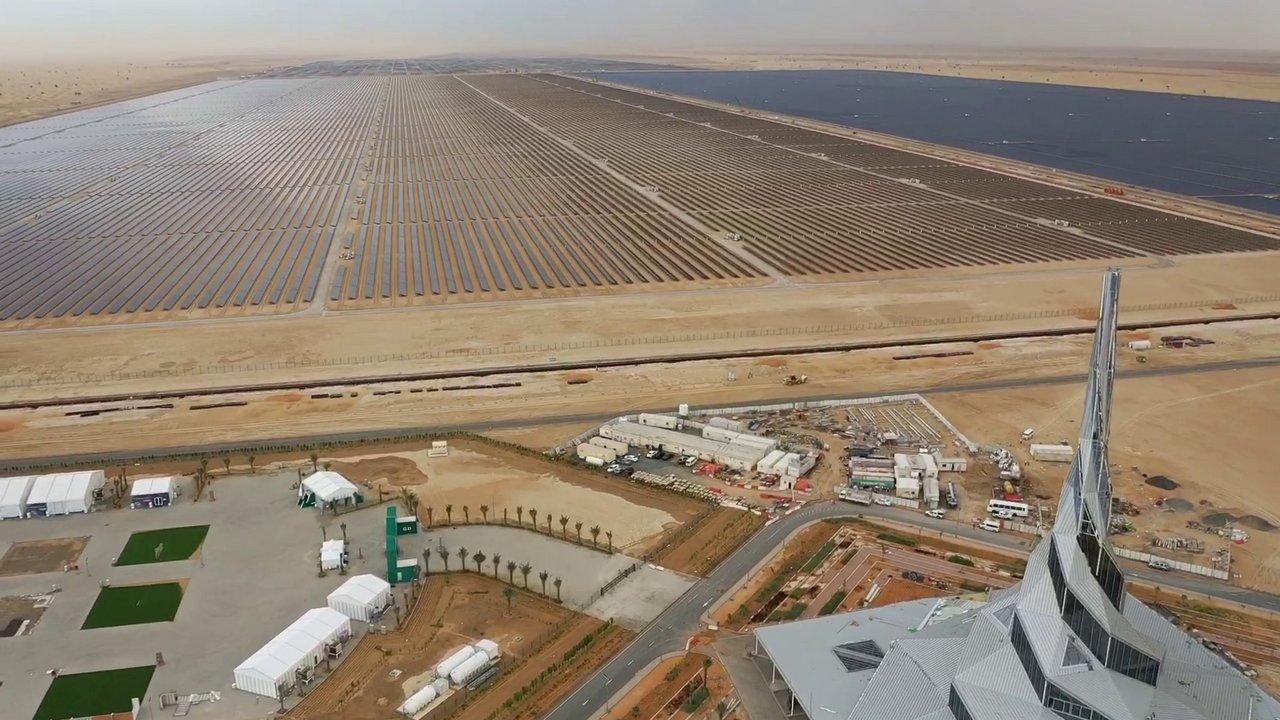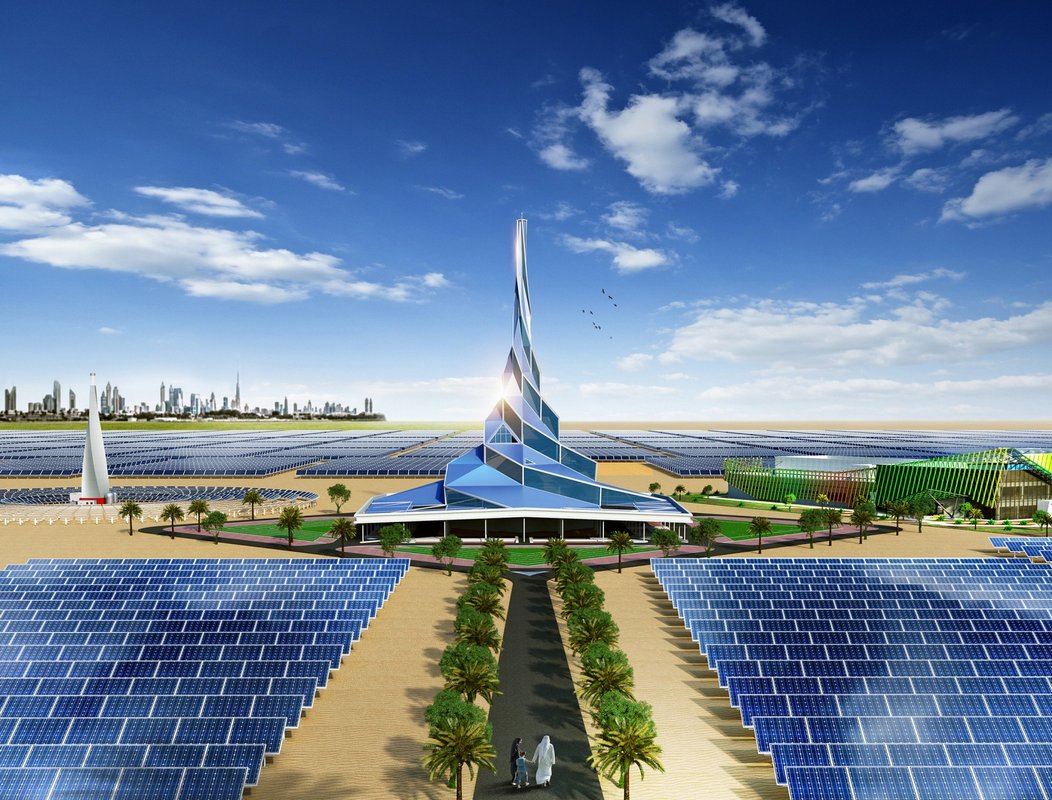Under the Arabian sun, a monumental construction effort is making headway. Located deep within Dubai’s desert interior, the Mohammed Bin Rashid Al Maktoum Solar Park — named after the emirate’s ruler and the UAE’s vice president and prime minister — continues to grow and has just passed another milestone.
In its eighth year of development, satellite images give a sense of scale already: miles of photovoltaics arranged along neat east-west lines, their uniformity at odds with the creases and crinkles of the sands surrounding the energy plant.
Once finished, Dubai Energy and Water Authority (DEWA) said the 50 billion-dirham ($13.6 billion) investment could power as many as 1.3 million homes, reducing carbon emissions by 6.5 million tonnes annually.
First announced in 2012 and with a scheduled completion date of 2030, the 5,000-megawatt solar park will take three times as long to finish as the Burj Khalifa. Phases one and two, which are already complete, comprised 2.3 million photovoltaic panels with a capacity of 213 megawatts. Phase three, deep in construction, adds over 3 million photovoltaics and another 800 megawatts and will be completed in 2020, say DEWA.
But after years of spreading out across the desert floor, the solar project is now rising upward with phase four — perhaps the most ambitious development yet.
After breaking ground in March 2018, the base is now complete for what DEWA claims will be the tallest concentrated solar power (CSP) tower in the world.
It will use mirrors called heliostats to focus sunlight at the top of the tower, in order to heat up a flow of molten salts. The heat is used to power steam turbines, generating electricity.
“Typically, CSP will have efficiencies which are slightly higher than photovoltaics (PVs),” Christos Markides, professor of clean energy technologies at Imperial College London, said. CSP stores energy as heat rather than in batteries. “Thermal energy storage is something like 10-times cheaper than electrical energy storage,” he explained. “That gives that particular technology an advantage.”
Practically speaking, it means CSP can continue to create electricity even without the sun and well into the night. Dubai’s tower can store heat for 15 hours and will be able to provide power 24 hours a day, said DEWA. The CSP tower will top out at 260 meters (853 feet) when completed, DEWA added and will be surrounded by 70,000 heliostats.
In addition to the 100-megawatt CSP tower, phase four will supply another 850 megawatts of power via parabolic troughs (another form of CSP) and photovoltaics. It was recently announced that phase five’s 900 megawatts of photovoltaics will be commissioned in stages starting 2021 while remaining installations to bring the park up to its end goal of 5,000 megawatts are still in planning.
With a capacity of 1,963 megawatts, phases one to four alone put the Mohammed Bin Rashid Al Maktoum Solar Park high on the list of largest-capacity solar parks in development around the world. The Ladakh Solar Farm in India will produce 3,000 megawatts when operational in 2023, per the World Economic Forum. At the time of writing, the 1,547-megawatt Tengger Desert Solar Park in Ningxia, China is considered the largest operating photovoltaic park in the world.
But building to these colossal proportions is only part of the battle. Resilience — combating hostile climates and the ravages of time — is also key.
“Dust remains a significant challenge,” DEWA said, “as dust accumulation on modules can substantially reduce the power generation of those modules.” The government department said as well as studying panel coating technologies it is implementing “a dry robotic cleaning system to clean the whole plant in a very short time.”
Markides also said the temperature is an important factor: “
(Photovoltaics) degrade faster if the temperatures swing wildly between, say, very cold and very hot — and they also degrade if the temperatures particularly become very hot.” In Dubai, summer temperatures can move from the high-40s Celsius in the day to mid-teens at night.
The Dubai Clean Energy Strategy 2050 is working towards generating 25% of its energy output from clean sources by 2030, and 75% by 2050 — equivalent to a capacity of 42,000 megawatts.



 Alghadeer TV Alghadeer TV
Alghadeer TV Alghadeer TV
